There’s nothing worse than having no hot water pressure. Not only is this an inconvenience, but it’s also a hassle trying to figure out what specifically is wrong. There are a couple of different reasons why you may have no hot water pressure. Don’t get frustrated. Take advantage of this easy-to-use guide, so you can get back to your normal routine as fast as can be.
A closed shut-off valve
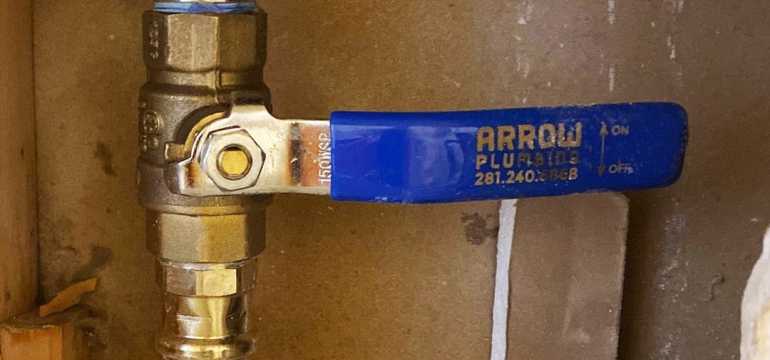
The first thing you’ll want to do is ensure that your hot water shut-off valve isn’t partially closed. Locate the shut-off valve on your water heater and make sure it’s fully open. Shut-off valves can accidentally get shut by either getting bumped into or brushed as someone is walking by. When the shut-off valve is not turned all the way on, you’ll have no hot water pressure. This is one of the most common reasons people have no hot water pressure.
After making sure the valve is turned all the way on, you should answer this question: are experiencing this problem in only one faucet or fixture in your home?
If your answer is yes, your problem is likely a dirty faucet aerator or some sort of blockage in your piping system.
Otherwise, the problem is more than likely sediment build-up in your water heater’s tank.
I have cold water but no hot water pressure
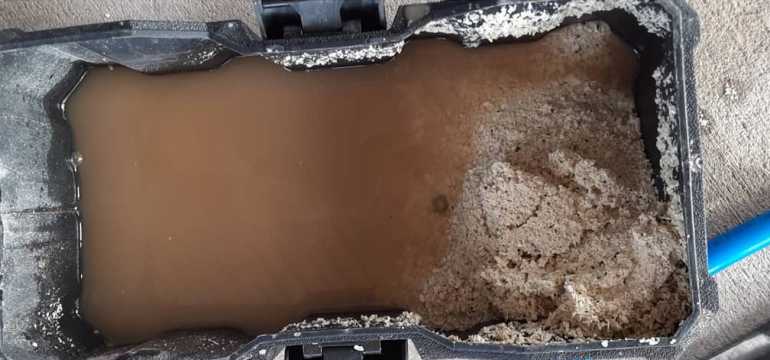
A sediment build-up is a result of using hard water in your home. If you’re unfamiliar with what hard water is, it’s water with a high loose mineral content, the biggest being calcium. These loose calcium minerals sink and then settle to the bottom of your hot water tank over time. This, in return, can cause problems, including having no hot water pressure.
So, how do these loose minerals at the bottom of your tank cause your shower or another fixture in your home to have no hot water pressure?
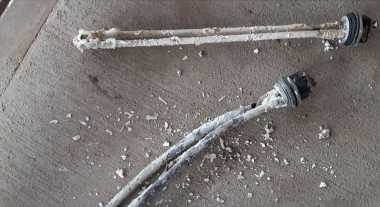
Calcium build up on the heater’s elements
Your water heater has two pipes entering it. These include the cold water supply pipeline and the hot water outlet pipe. When the sediment travels through these pipes, it not only settles on the bottom of the tank, the sediment will also build up on the inside of these pipes, causing water to run through them slowly and eventually a full blockage.
When you have no hot water pressure, your tank will begin to make funny sounds. This is another way you’ll know that you have a problem. Once that you know what the problem is, you’ll need to remove the sediment. By flushing out your tank, you can remove all the sediment and ensure your hot water pressure is restored to its normal level.
Flushing your hot water tank when there’s no pressure in your house
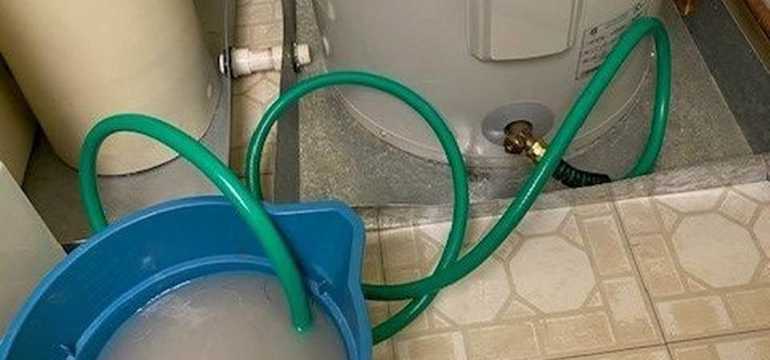
Here are the basic steps:
- First, you’ll need to cut the power to your hot water heater. You’ll usually do this by switching off the circuit breaker. If you have a gas-powered water heater, then you’ll have to shut the valve that controls your tank’s gas supply.
- Next, locate the cold water valve and shut it. If you don’t know where this valve is, check the owner’s manual. This valve is usually located either next to or above the tank.
- Now you’ll want to locate your hot water heater’s drain nozzle at the bottom of the tank. Once you find it, take an average garden hose and screw it to the end of the water heater’s drain nozzle.
- Direct the other end of the garden hose to a safe draining location, like a drain or a large tub.
- Open the drain valve at the bottom of your hot water heater and let the tank drain until it’s completely empty.
- You can now turn on the cold water supply valve and run fresh cold water through it. Do this for about 10 minutes unless you have a serious build-up. In that case, run water for a longer period of time. This will flush out any leftover sediment that’s left. Once clear, shut the cold water valve off.
- After the sediment is gone and the tank is empty, unscrew the garden hose and shut the drain valve at the bottom of your hot water tank.
- Once you know the drain valve is tightly shut, you can turn on the cold water valve again and begin filling up the tank.
- After the tank is full, turn the power back on. However, the tank has to be completely full before you turn on the power.
Once your hot water tank has heated up the water, check your hot water pressure level. Your problem should be fixed now.
Preventative Care
To keep sediment from building up in your hot water heater, it’s suggested that you flush your tank at least once a year. This will help keep sediment from building up in your tank, which in return will keep the hot water pressure at the appropriate level.
This simple maintenance will not only help eliminate hot water pressure issues, but it’ll also help you extend the life of your hot water tank. When there’s sediment build-up, your water heater tank will have to work harder. By having a tank that flows freely, your hot water tank won’t have to work as hard.
Hot water heater supply lines
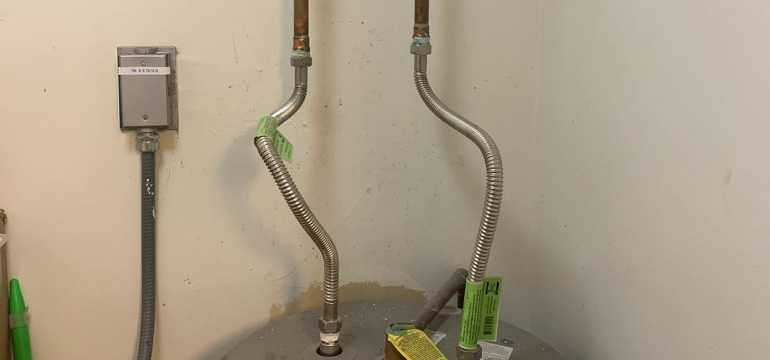
Another reason why you may have no hot water pressure in your house could be either because your hot water supply line is blocked or damaged. In both situations, it’s best to go ahead and replace the line. If you’re not experienced with this sort of thing, you may want to hire a professional plumber to take care of this for you. However, if you do want to do it yourself, then follow the steps below.
- Turn off the power by switching it off on your home’s circuit board or shut off the gas line going into the tank.
- Locate the hot water supply line. It should have the letter “H” on it or the word “HOT.”
- Just remember, there are no valves connected to your water heater’s hot water line.
- Measure the supply line with a measuring tape.
- Go to your local home improvement store and buy copper lines of the same length. Make sure there are rubber gaskets located at each end of the supply line. If not, you’ll need to purchase these and attach them to the end of the copper line.
- Drain the hot water line by turning on the hot water upstairs. After a few minutes, turn it off.
- Find the pressure release valve and pull up on it. You’ll want to hold it up for a few moments. This will allow all the pressure from inside the tank and the lines to disperse.
- With the proper tools, loosen and remove the nuts on both ends of the hot water supply line.
- Attach your new hot water line. Make sure the nuts are on tightly.
- Turn the power or the gas supply back on.
This is typically an inexpensive repair if you do it yourself. If you notice that your cold water supply line is worn out, it might be a good time to replace it since you’re already replacing your hot water line.
Do you have a gravity fed system?
If you’ve never heard of what a gravity fed system is, it’s a system that relies entirely on the physical height difference to create pressure. These systems typically distribute the water at a slower rate than mains fed systems. You should consider installing a mains pressure system to solve your low hot water pressure problem.
Tankless water heater solution
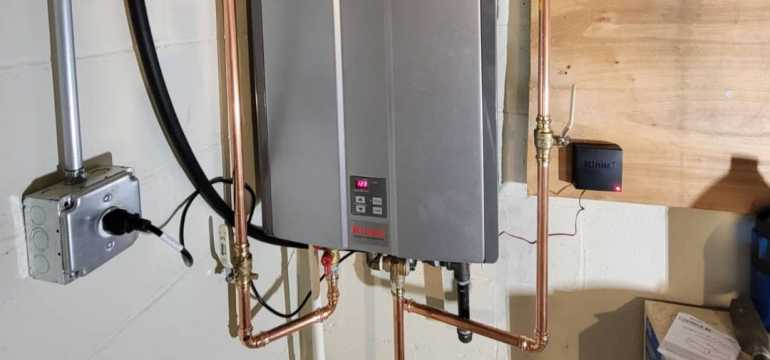
Since hard water is typically a culprit when you have no hot water pressure, it might be best to invest in a tankless hot water heater. These water heaters fight back against sediment build-up.
Although tankless water heaters are still susceptible to hard water, they’re definitely very minimal to a water heater tank. The reason being is that the sediments don’t usually build up on the inside. They’re typically flushed out with hot water.
However, just as with water heater tanks, tankless water heaters still require annual maintenance. For further protection, you can also treat your water with a softener. By treating your water with a softener, you’ll minimize the effects of hard water, you’ll extend the life of your water heater, and you increase the life of your whole plumbing system as well. It’s really a smart decision.
- If You Have No Hot Water Pressure, Here’s What You Should Do - December 28, 2021
- What is the Right Shower Drain Pipe Size? - January 25, 2020
- Wet Vent Plumbing, What Is It? How Do You Utilize It? - November 17, 2019

